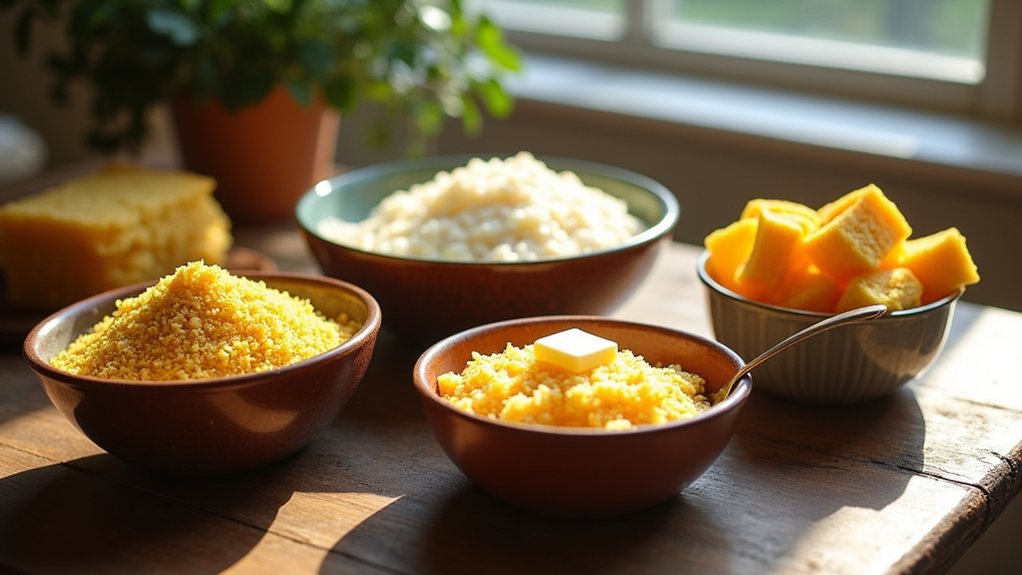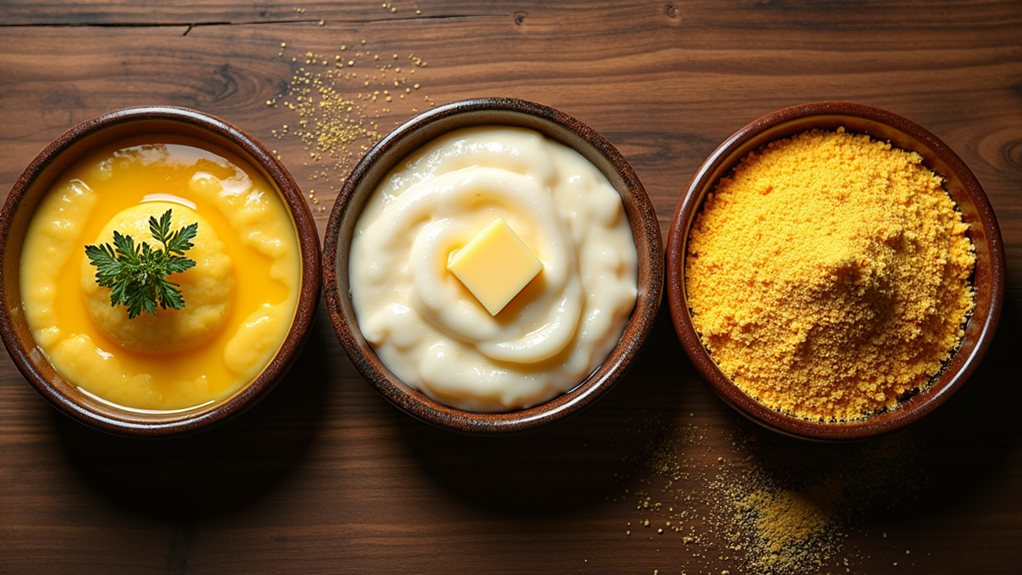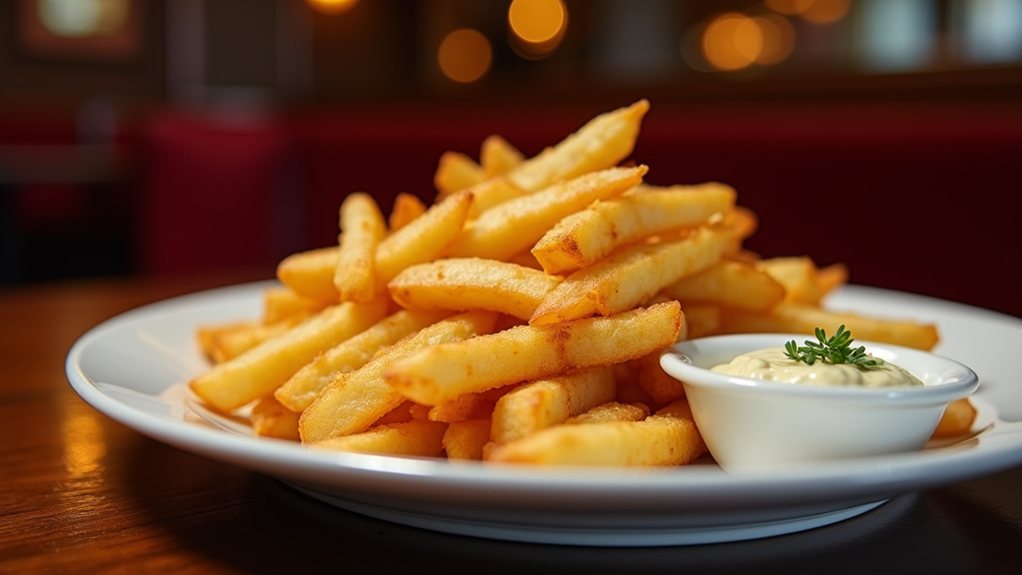Corn-based ingredients grace tables across America in diverse forms, though confusion often surrounds their distinct identities. Polenta, grits, and cornmeal—three culinary cousins with separate cultural lineages—appear similar at initial glance, yet offer unique textures and applications that skilled cooks recognize immediately. The distinctions between these ground corn products matter considerably when crafting authentic dishes, as using the wrong variety can transform a cherished family recipe from comforting to confounding. What exactly sets these golden staples apart?
The Truth Behind America’s Favorite Corn Preparations

Confusion often arises when distinguishing between polenta, grits, and cornmeal, three corn-based staples that share similarities yet maintain distinct identities in global cuisines. Though all three come from ground dried corn, their differences lie in the type of corn used, grind texture, and cultural applications, creating unique experiences for the palate and plate.
While all derived from ground corn, polenta, grits, and cornmeal express distinctive identities through their textures, corn varieties, and cultural heritage.
The texture varies greatly among these three corn products. Cornmeal offers the finest grind, ranging from powdery to medium, making it ideal for baking cornbread or dusting surfaces to prevent sticking. Grits and polenta, meanwhile, maintain coarser textures that contribute to their heartier dish profiles, with grits typically being produced from hominy, corn that has undergone an alkali treatment process.
Each product carries its own cultural heritage that shapes its use in kitchens worldwide. Polenta claims roots in Northern Italian cuisine, originally referring to any grain mush before corn’s introduction to Europe. Grits proudly represent Southern American culinary traditions, commonly appearing at breakfast tables alongside eggs and bacon. Authentic Italian polenta is traditionally made with a specific variety of hard corn called Otto file. Cornmeal crosses cultural boundaries as a versatile ingredient in everything from Mexican tortillas to New England johnnycakes.
The type of corn used further distinguishes these products. Flint corn, with its hard starch content, forms the backbone of traditional polenta, allowing it to maintain texture after cooking. Dent corn, featuring softer starch, creates the smooth, creamy consistency cherished in grits. In the United States, the lack of regulations regarding naming conventions for corn products often contributes to consumer confusion in grocery stores.
This corn science explains why polenta can be cooled, sliced, and fried while maintaining its form, while grits typically remain a soft dish.
Cooking methods and times also separate these corn variations. Stone-ground grits require approximately 45 minutes of stovetop attention, whereas instant varieties can be ready in just 5-10 minutes.
Polenta demands patient stirring and typically incorporates stock for improved flavor, transforming simple corn into a canvas for culinary creativity. Understanding these differences allows cooks to select the right corn product for specific dishes, honoring traditions while exploring new culinary territories.





